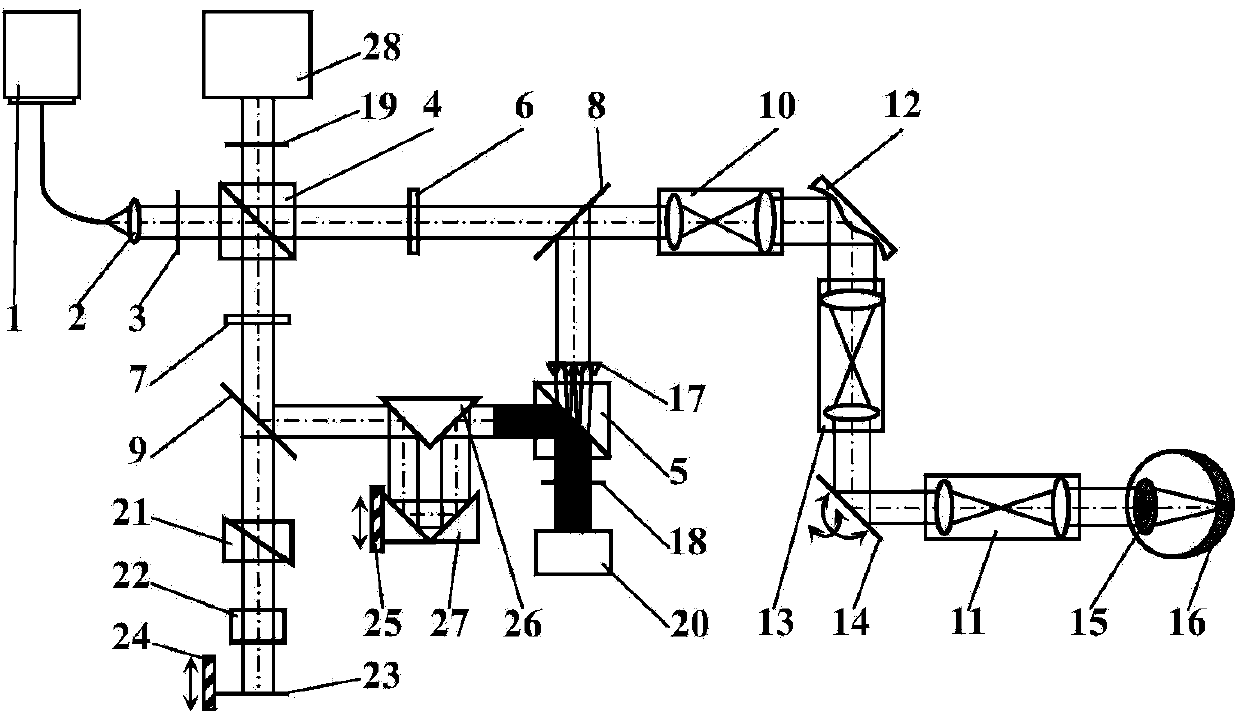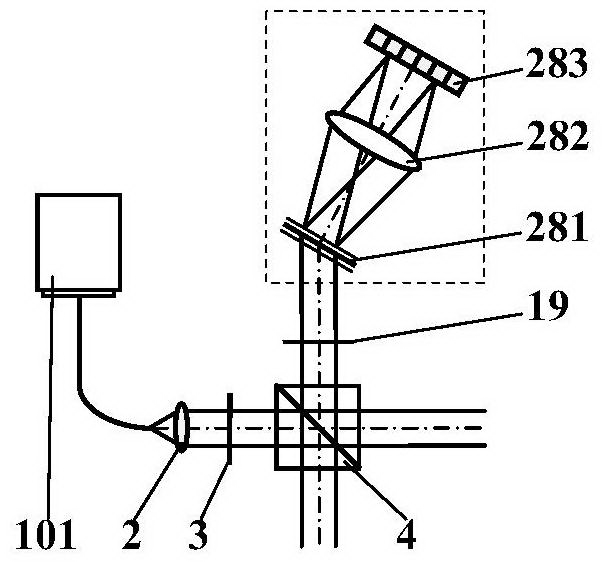Adaptive-optics OCT retina imager using coherence-gated wavefront sensor
A technology of wavefront sensor and adaptive optics, which is applied in the fields of application, medical science, and eye testing equipment, etc., can solve the problems of increasing the appearance size and cost of the instrument, signal loss polarization characteristics, corneal reflection, etc., to reduce the appearance size , reduce requirements, enhance the effect of strength
- Summary
- Abstract
- Description
- Claims
- Application Information
AI Technical Summary
Problems solved by technology
Method used
Image
Examples
Embodiment Construction
[0027] The system structure of the adaptive optics OCT retinal imager using the coherent gate wavefront sensor proposed by the present invention is as follows: figure 1 As shown, it includes: light source 1, spectral domain OCT light source 101, frequency-swept OCT light source 102, collimator lens 2, polarizer 3, first and second broadband polarization beam splitter prisms 4-5, first and second λ / 4 wave plates 6-7, first and second broadband beam splitters 8-9, first and second beam expanders 10-11, deformable mirror 12, beam reducer 13, two-dimensional scanner 14, human eye refraction System 15, retina 16, microlens array 17, first and second analyzers 18-19, wavefront detector 20, dispersion compensation film 21, water box 22, reference mirror 23, first and second translation stages 24 -25, reflective prism 26, return prism 27, imaging detection module 28, grating 281, imaging lens 282, line array detector 283, coupling lens 284, fiber optic coupler 285, balance detector 2...
PUM
 Login to View More
Login to View More Abstract
Description
Claims
Application Information
 Login to View More
Login to View More - R&D
- Intellectual Property
- Life Sciences
- Materials
- Tech Scout
- Unparalleled Data Quality
- Higher Quality Content
- 60% Fewer Hallucinations
Browse by: Latest US Patents, China's latest patents, Technical Efficacy Thesaurus, Application Domain, Technology Topic, Popular Technical Reports.
© 2025 PatSnap. All rights reserved.Legal|Privacy policy|Modern Slavery Act Transparency Statement|Sitemap|About US| Contact US: help@patsnap.com



